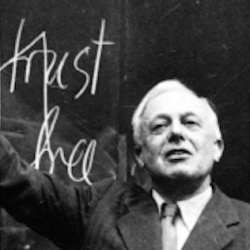The world is full of activists and “change agents,” but Duncan Green doesn’t think anyone has a clear idea of how social change occurs. In How Change Happens, he offers elements of a theory of change, along with case studies and some practical direction for people who want to change the world.
He takes a “systems approach” that emphasizes the complexity of social phenomena; uncountable variables interact in all sorts of ways with each other. “Many of the mental models we use are linear plans,” he writes, “‘if A, then B’—with profound consequences in terms of failure, frustration, and missed opportunities.” Because we expect B to follow A, failures and backfires are obstacles to change.
Encouraging social change in a complex system, he claims, is more like the experimental process of raising children: “parents make it up as the go along. And they should.” Sticking with a theory of parenting come thick or thin is a recipe for disaster and dysfunction. Green writes, “What really helps parents is experience (the second kid is usually easier), and the advice and reassurance of people who’ve been through it themselves—‘mentoring’ in management speak. Working in complex systems requires the same kind of iterative, collaborative, and flexible approach.”
Green takes a cue from Milton Friedman, who argued that real social change occurs because of crises. In Friedman’s words, “Only a crisis —actual or perceived—produces real change. When that crisis occurs, the actions that are taken depend on the ideas that are lying around. That, I believe, is our basic function: to develop alternatives to existing policies, to keep them alive and available until the politically impossible becomes politically inevitable.”
Crises are intrusions into linear, recipe-like plans for change. They should be seen, Green agrees, as manna from heaven.
In another possible nod to Friedman, he suggests that activists float multiple efforts at the same time: “Activists hate failure. No one wants to think they’ve wasted their time, or wake up to newspaper headlines about money lost or ‘wasted’ on failed projects. Compare this risk aversion to a venture capitalist who backs ten projects knowing that nine will fail, but he or she will make enough money on the tenth to more than compensate for the rest.”















